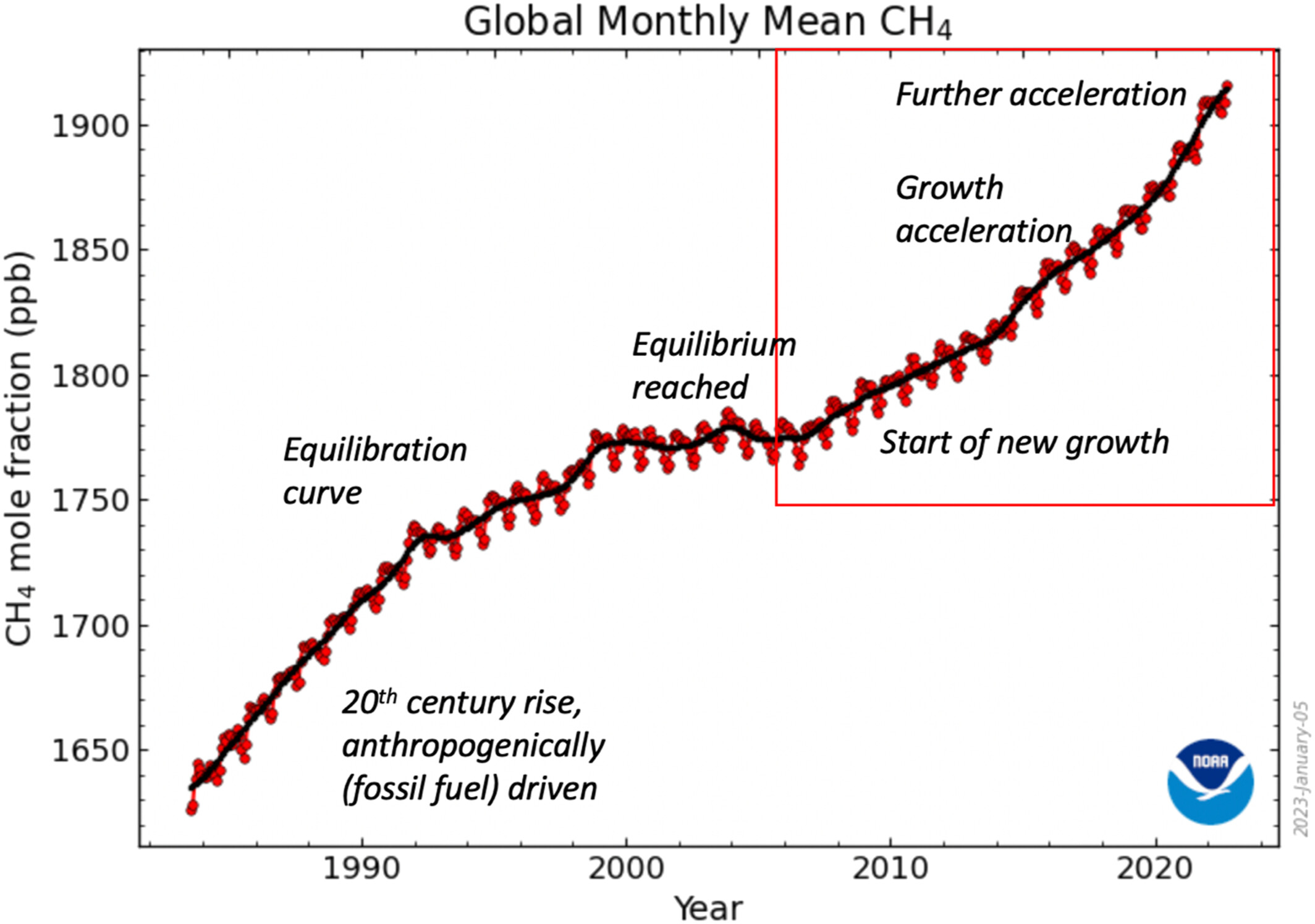The past 17 years have seen some unusual rises in levels of methane gas in Earth’s atmosphere – and this surge might be a messenger for something bigger, according to new research. It’s not certain what this methane increase means exactly, but scientists argue it’s reminiscent of past “termination events” in Earth’s climate system that have ended ice ages.
Earth’s climate constantly swings between long and cold glacial periods – often called ice ages – where vast ice sheets cover northern Europe and Canada, and shorter inter-glacial periods of warmer temperatures. This happens on a giant timescale of thousands upon thousands of years, much longer than a human lifespan.
The end of these ice ages is known as a glacial termination, an overhaul of Earth’s ocean-atmosphere system that marks the transition from a glacial-to-interglacial period. This is another lengthy process that typically takes thousands of years.
Currently, we are in an interglacial stage of an ice age called the Quaternary Ice Age, which began around 2.5 million years ago and continues today. However, there are hints that some kind of change could be brewing. Looking at Earth’s methane levels, there are some indications that we might be in the early days of a “termination-like” pattern.

Methane levels plateaued towards the end of the 20th century, then rose against from 2006 onwards.
Image credit: NOAA/Nisbet et al. (2023)
Methane naturally exists in our atmosphere and can act as a potent heat-trapping greenhouse gas. The majority of the gas has an anthropogenic source – namely fossil fuel use, farming, landfills, and waste – but the remainder comes from natural sources – notably rotting vegetation in wetlands and thawing permafrost.
Levels quickly climbed throughout the 20th century in the wake of the Industrial Revolution and fossil fuel combustion, but the increase plateaued towards the end of the century. Then, around 2006, another rise in methane began, not purely related to fossil fuels.
Much of these new emissions come from wetlands located near the equator. Bear in mind, though, that this itself is a consequence of climate change creating warmer and wetter conditions that fuel decomposition in the wetlands.
In a new study, scientists at looked recent changes in methane from 2006 to 2022 and compared it to patterns seen during previous glacial terminations. Their findings suggest that methane levels are currently behaving how they did at the start of these grand transitions from cold ice ages to warmer interglacial climates.
“It remains possible that methane’s current growth is within the range of Holocene variability, but it is also possible that methane’s recent growth and isotopic shift may indicate a large-scale reorganization of the natural climate and biosphere is underway,” the study authors write.
Since we are already in a warm interglacial stage, it’s not certain how this potential termination-like event could unfold. However, this does not mean we are at the dawn of a new ice age. Together with the better-understood impacts of climate change, it’s likely that Earth will be heading toward an even warmer climate, bringing sweeping changes to Earth’s natural systems.
“Methane is both a driver and a messenger of climate change. We don’t know why it is now rising so rapidly, but the pattern of growth since late 2006 resembles how methane behaved during great flips in Earth’s climate in the distant past,” Euan Nisbet, study author and Professor of Earth Sciences at the Royal Holloway University of London, wrote for The Conversation.
He concluded: “Roman numerals IX to I denote past great climate transitions. There is no Roman number zero, but then any future termination-scale transition will be different – a temperature step from our present interglacial climate to some new future that is warmer yet. Methane’s signal is still unclear, but the question remains: has Termination Zero begun?”
The study is published in the journal Global Biogeochemical Cycles.
Source Link: Surging Methane Suggests Earth Is Brewing An Ice Age Termination Event